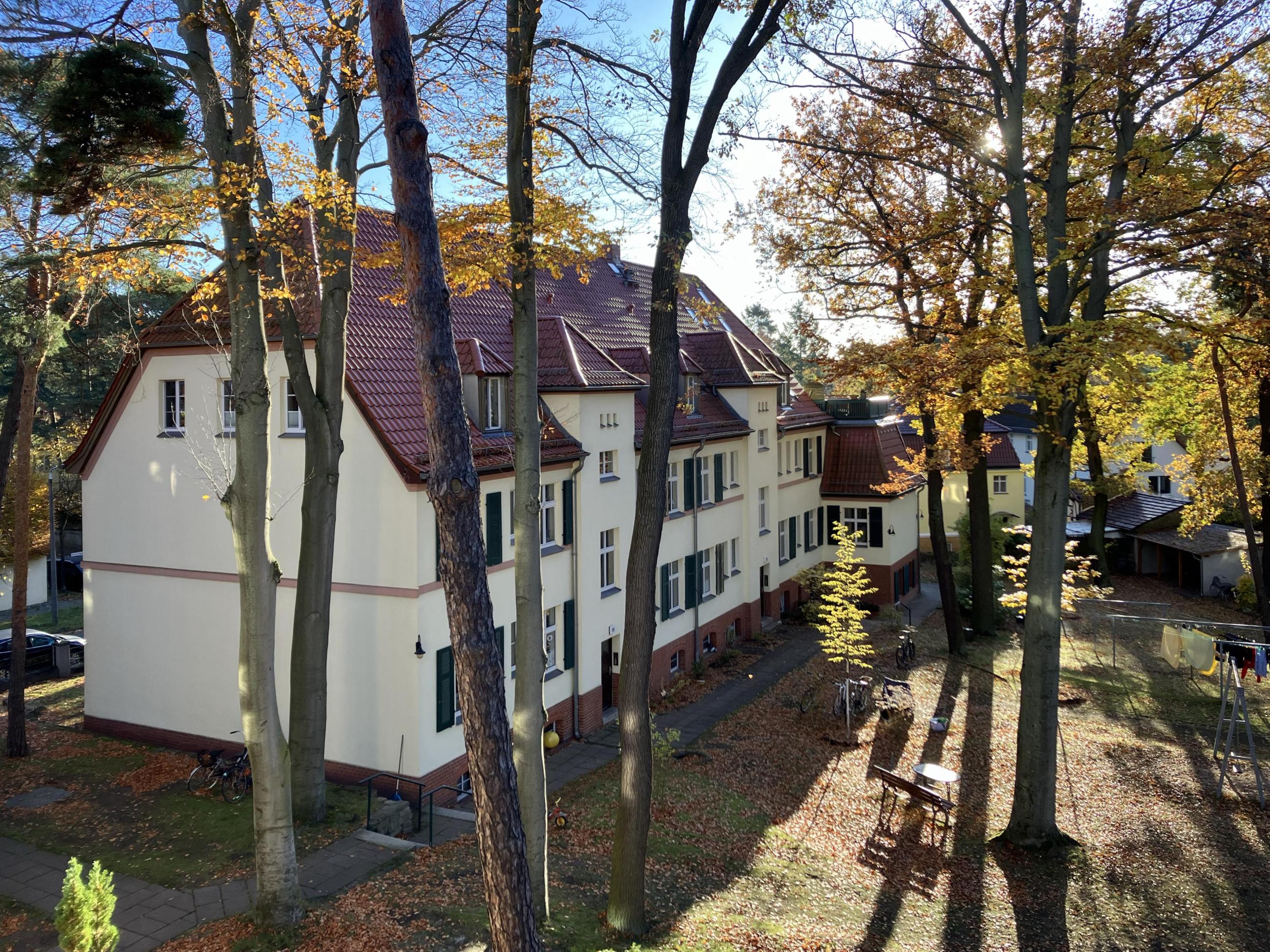The Architect Emilie Winkelmann: Work, Influence and Impact
Emilie Winkelmann (1875 – 1951) was the first woman to open her own architectural practice in Germany in 1907. At a time when women could only enrol at German universities in exceptional cases and the professional field of architecture was still entirely in the hands of men, Winkelmann was able to establish herself as a sought-after architect in Berlin. The project focuses on her built work, her influence, her networks and the impact she achieved through them.

Emilie Winkelmann opened her architectural practice at a significant time for the establishment of women in architecture. Contacts with the bourgeois women's movement helped her to secure commissions early on, which not only enabled her to expand her own portfolio, but also to publicise the work of women in various professional fields: In the 1912 exhibition "Die Frau in Haus und Beruf" organised by the German Lyceum Club in Berlin, she was responsible for the "Women in Architecture" section, in which she presented around 30 of her own buildings and designs to a wide audience – far more than the two other female architects represented there, Elisabeth von Knobelsdorff (1877 – 1959), who was employed in Winkelmann's office for a time, and Therese Mogger (1875 – 1956), could boast. The following year, Winkelmann was commissioned to remodel the Lyceum Club building in Berlin, giving the club's activities on Lützowplatz an architectural face that would have an impact on the cityscape.
In addition to such high-profile projects, she turned her attention very early onto building projects involving the design and realisation of new forms of housing specifically aimed at working women. Between 1913 and 1914, she built the "Haus in der Sonne" in Babelsberg – a residential home for pensioners who were looking for a self-determined yet communal form of living in old age. A few years later, Winkelmann was able to realise the "Victoria-Studienhaus" (Ottilie von Hansemann-Haus) in Charlottenburg, Europe's first female student residence, which offered young women accommodation beyond established, often externally determined housing models such as subletting.
In formal terms, Emilie Winkelmann followed the moderate paths of architectural reform, both in these projects, which were breaking new ground, and in her many country houses, which she designed on behalf of a financially strong clientele. Winkelmann's career, her commitment within the women's movement and not least her buildings themselves shed light on important facets of the demand for participation and emancipation within a society that was exploring a modern image of women between traditional patterns and new realities.
As the first independent German female architect, Emilie Winkelmann has long been the focus of architectural history research, as has the contribution of female architects to architectural production in general since the end of the 19th century. The aim of the project is to analyse and systematically document Winkelmann's work against the background of the conditions under which it was created, its influences and objectives. The aim is to publish the results in book form and in an exhibition.